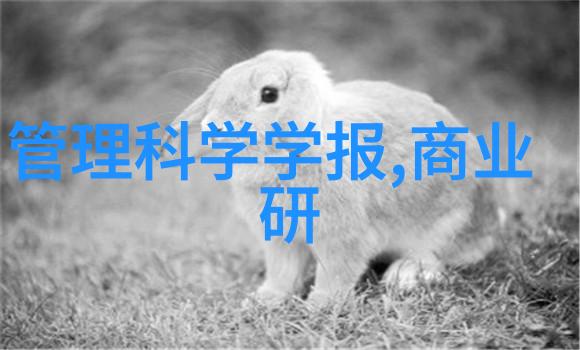首页 - 商业研究 - 咖啡与水的比例 手冲咖啡的标准冲泡比例
标准的冲泡比例(Standard Brewing Ratio) 咖啡的杯数 Cups of Coffee 所用咖啡量COFFEE TO BE USED 所用水量WATER TO BE USED 按重量计 BY WEIGHT 按量具计 BY MEASURE 盎司Ounces 克Grams 茶匙Tea Spoons 汤匙Table Spoons 杯Cups 咖啡液体(盎司) Fluid Ounces 杯数Cups 品脱Pints 夸脱Quarts 1/2加仑1/2 GAL 毫升CCs (milliliters) 升Liters 1 0.38 10.6 6 2 1/8 8 1 1/2 1/4 1/8 237 0.24 2 0.75 21.3 12 4 1/4 16 2 1 1/2 1/4 473 0.47 3 1.13 31.9 18 6 3/8 24 3 1 1/2 3/4 3/8 710 0.71 4 1.50 42.5 24 8 1/2 32 4 2 1 1/2 947 0.95 5 1.88 53.2 30 10 5/8 40 5 2 1/2 1 1/4 5/8 1183 1.18 6 2.25 63.8 36 12 3/4 48 6 3 1 1/2 3/4 1420 1.42 7 2.63 74.4 42 14 7/8 56 7 3 1/2 1 3/4 7/8 1656 1.66 8 3.00 85.1 48 16 1 64 8 4 2 1 1893 1.89 9 3.38 95.7 54 18 1 1/8 72 9 4 1/2 2 1/4 1 1/8 2130 2.13 10 3.75 106.3 60 20 1 1/4 80 10 5 2 1/2 1 1/4 2366 2.37 11 4.13 116.9 66 22 1 3/8 88 11 5 1/2 2 3/4 1 3/8 2603 2.60 12 4.50 127.6 72 24 1 1/2 96 12 6 3 1 1/2 2840 2.84 如果已知咖啡粉的量,乘以系数21.33,就知道需用多少盎司的水(0.046875是逆系数),乘以系数22.2593,就得出需要多少毫升的水(0.04493是逆系数); 比如:有1.2盎司咖啡粉,乘以21.33,则得出需要25.6盎司的水;92.6克的咖啡粉,则需要2061CCs(2.06升)水。用已知水量,乘以逆系数,即可得出所需的咖啡粉量。 发烧友的冲泡比例Connoisseur’s Brewing Ratio Cups of Coffee 所用咖啡量COFFEE TO BE USED 所用水量 WATER TO BE USED BY WEIGHT BY MEASURE Ounces Grams Tea Spoons Table Spoons Cups Fluid Ounces Cups Pints Quarts 1/2 Gal CCs (milliliters) Liters 1 0.38 10.6 6 2 1/8 6 3/4 3/8 3/16 3/32 177 0.18 2 0.75 21.3 12 4 1/4 12 1 1/2 3/4 3/8 3/16 355 0.35 3 1.13 31.9 18 6 3/8 18 2 1/4 1 1/8 9/16 9/32 532 0.53 4 1.50 42.5 24 8 1/2 24 3 1 1/2 3/4 3/8 710 0.71 5 1.88 53.2 30 10 5/8 30 3 3/4 1 7/8 15/16 15/32 887 0.89 6 2.25 63.8 36 12 3/4 36 4 1/2 2 1/4 1 1/8 9/16 1065 1.06 7 2.63 74.4 42 14 7/8 42 5 1/4 2 5/8 1 5/16 21/32 1242 1.24 8 3.00 85.1 48 16 1 48 6 3 1 1/2 3/4 1420 1.42 9 3.38 95.7 54 18 1 1/8 54 6 3/4 3 3/8 1 11/16 27/32 1597 1.60 10 3.75 106.3 60 20 1 1/4 60 7 1/2 3 3/4 1 7/8 15/16 1775 1.77 11 4.13 116.9 66 22 1 3/8 66 8 1/4 4 1/8 2 1/16 1 1/32 1952 1.95 12 4.50 127.6 72 24 1 1/2 72 9 4 1/2 2 1/4 1 1/8 2130 2.13 如果已知咖啡粉的量,乘以系数16,就知道需用多少盎司的水(0.0625是逆系数),乘以系数16.6945,就得出需要多少毫升的水(0.04493是逆系数); 比如:有1.2盎司咖啡粉,乘以16.0,则得出需要19.2盎司的水;92.6克的咖啡粉,则需要1562CCs(1.56升)水。用已知水量,乘以逆系数,即可得出所需的咖啡粉量。 对比两张表格,不难发现,所谓发烧友的冲泡,只不过浓度稍大、口感更重一些而已。 简单的说,正常情况下,一份粉(10克),冲入约22份(220克)水,发烧友则用一份粉(10克),冲约16~17份水(160~170克水)。 下图是SCAA的咖啡冲泡率图。如果你有TDS这个小仪器,测出咖啡的数值在下表中间的框范围内,则咖啡酒相对均衡、好喝。在这张表中,横坐标是咖啡萃取率,即咖啡豆(粉)中萃取出的咖啡成分占咖啡豆(份)的比率,纵坐标表示的是萃取出的咖啡成分(特别提示:这不是咖啡粉的重量)占整个咖啡液的比例,也称浓度。SCAA长期的观察、研究得出的结论是,咖啡的萃取率在18~22%,浓度在1.15~1.35%时(即框的范围),咖啡的口感最好(均衡、好喝)。 The Gold Cup Programme is a European drive by the SCAE to improve the standard of filter coffee consumed in the marketplace. It ensures a WIN for the Coffee Roaster, a WIN for the Restaurateur and a WIN for the consumer. SCAE Gold Cup = Win-Win-Win The SCAE’s Gold Cup programme promotes a better, measurable standard in filter coffee. This will be achieved by recognising an internationally respected set of rules on brewing filter coffee. The Gold Cup sets minimum standards for coffee to water ratio, brewing temperature and holding time, and optimum standards for coffee extraction and strength. How the Gold Cup works:The SCAE Gold Cup uses the industry to monitor itself, backed up by incontrovertible and well-researched scientific data to ensure the integrity of the Gold Cup as a quality standard is objectively maintained. THE ART OF BREWING – WHAT IS THE PERFECT CUP? There are acres of paper filled with data on coffee, coffee origins, coffee roasting and coffee flavour profiles. All these things have huge importance on what goes in the cup. As important is the alchemy or art of turning a coffee bean and water into a perfectly extracted cup of coffee. The Art of Brewing is effectively taking between 18 and 22% of a coffee bean and extracting it into approx 1.3% of the finished beverage. The most important aspect of ‘the perfect cup’ is the balance between strength of the beverage and correct extraction of the bean. THE SCIENCE OF BREWING – HOW TO GET THE PERFECT CUP Filter coffee as defined by the SCAE Gold Cup standard - ‘A ratio of 1 litre of fresh water brewed at 92° to 96°C through 50 to 65g of freshly ground coffee and filtered through an oxygen-bleached filter paper to extract between 18% and 22% of solids from the coffee.’ Scientifically, there are many aspects which influence the quality of filter coffee, most significantly: 1. Grammage – How much coffee we use per litre of water. 2. Grind – How coarse or fine we grind the roasted coffee bean 3. Contact Time – How long the ground beans and water are in contact to extract the brew. 4. Temperature – How consistent and what temperature the water is at brew time. 编译:黄伟

猜你喜欢
- 2025-02-15历史上的巴西咖啡豆阿拉比卡之谜是不是真正的阿拉比卡
- 2025-02-15麻药搜查官追踪罪恶的深渊
- 2025-02-15防弹咖啡能减肥吗不是它是骗局而你知道什么是摩卡什么是拿铁吗别被它们的名字迷惑了
- 2025-02-15晨曦的醇香咖啡之旅的起点探秘
- 2025-02-15防弹咖啡能减肥吗不是它是骗局看清楚了咖啡设备全套价格表才是你需要关注的重点
- 2025-02-15基金重仓股揭秘洞悉投资大师的优选之选
- 2025-02-15防弹咖啡能减肥吗它究竟是骗局还是300毫升咖啡需要多少咖啡豆的秘密武器
- 2025-02-15经济地理研究的实践与挑战基于投稿经验的探讨
- 2025-02-15在唐朝之外还有哪些其他朝代产生了著名的诗人呢
- 2025-02-15咖啡文化-品味不限深度探究咖啡口味种类及特点

